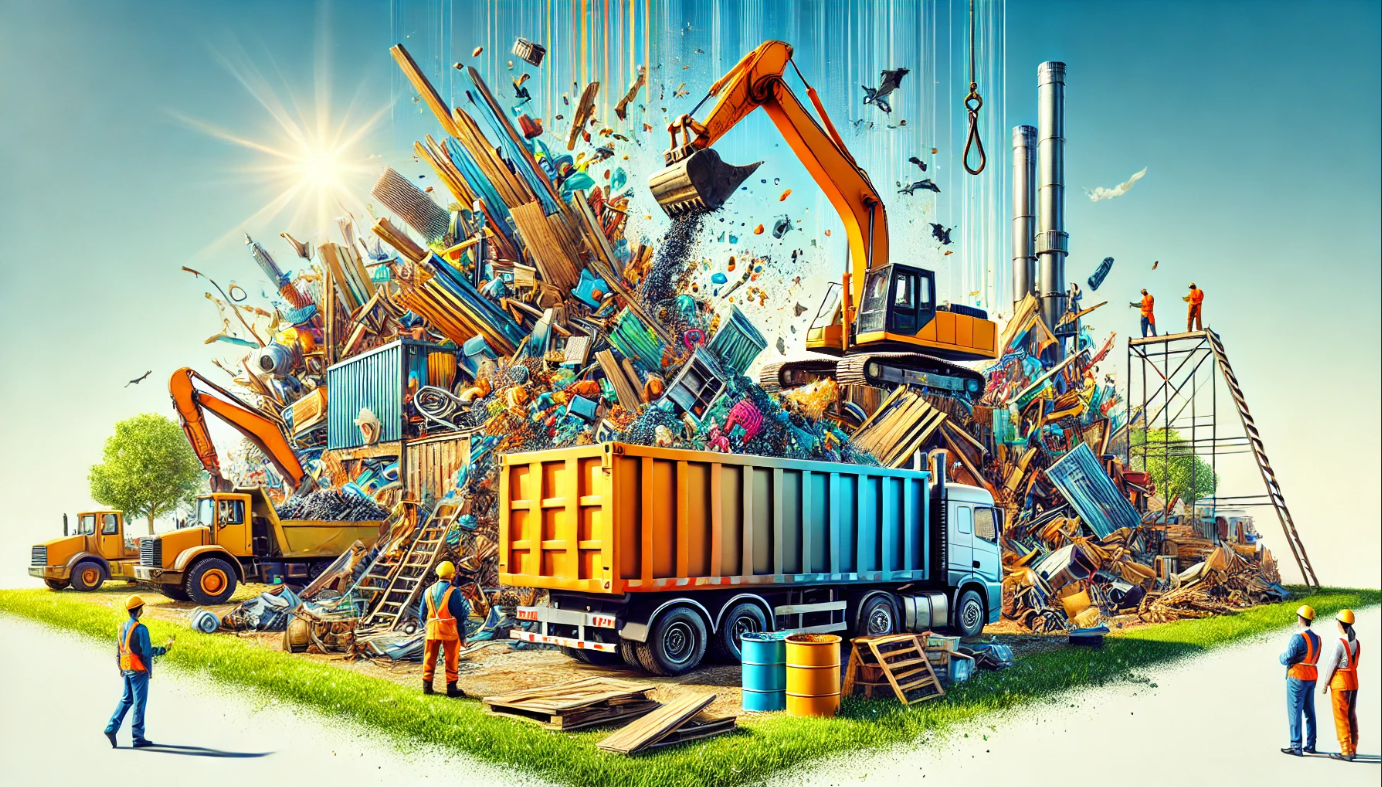
Why Professional Junk Haulers Are the Best Choice for Easy and Efficient Cleanouts
Construction projects, whether a small renovation or a large-scale build, often come with one significant downside—dealing with debris. From discarded drywall to broken tiles, wood scraps, and concrete chunks, the mess piles up quickly. This article will guide you through the essentials of efficient construction debris removal, whether you're tackling it yourself or hiring professionals.
Why Construction Debris Removal Matters
Proper debris management ensures:
- Safety: Reducing hazards like sharp materials and trip risks.
- Efficiency: Keeping your worksite clutter-free to maintain productivity.
- Compliance: Meeting local regulations for proper disposal.
- Eco-Friendliness: Minimizing landfill waste through recycling and repurposing.
Fun Fact:
Did you know that over 500 million tons of construction waste are generated yearly in the U.S. alone?
The Construction Debris Removal Process
1. Initial Sorting
Begin by separating recyclables, hazardous waste, and general trash. For example:
- Metals (like steel or aluminum) go into recycling.
- Concrete and asphalt can be repurposed.
- Hazardous materials like asbestos require specialized handling.
2. Container Selection
Choose between dumpsters, roll-off bins, or junk removal services based on the project's scope:
- Small projects = 10-yard dumpster.
- Large demolition = 30-40 yard dumpster.
3. Transport and Disposal
Professional junk removal companies handle:
- Loading debris safely.
- Transporting materials to appropriate facilities.
- Ensuring compliance with waste management laws.
Common Types of Construction Debris
| Debris Type | Examples | Disposal Method |
|---|---|---|
| Concrete & Asphalt | Broken sidewalks, driveways | Recycling or reuse in road construction |
| Wood | Lumber, plywood | Mulching or energy recovery |
| Metal | Steel beams, pipes | Recycling for new materials |
| Drywall | Sheetrock, plasterboard | Specialized recycling |
| Roofing Materials | Shingles, tiles | Recycling (if uncontaminated) |
DIY Construction Debris Removal: Is It Worth It?
While handling debris removal yourself might save money upfront, it can cost you time and safety if done inefficiently.
Pros:
- Lower immediate costs.
- Control over the sorting process.
Cons:
- Requires vehicle rental.
- Time-consuming loading and transport.
- Risk of injury from heavy or sharp materials.
Why Hire Professional Construction Debris Removal Services?
Benefits:
- Time-Saving: Pros handle the entire process quickly.
- Safety First: Avoid injuries from improper lifting or exposure to hazardous materials.
- Eco-Friendly: Professionals prioritize recycling and proper waste management.
- Compliance: Stay on the right side of local regulations.
FAQs About Construction Debris Removal
Q: What’s the fastest way to remove debris?
Hiring a professional service is typically the fastest option. They arrive with the right equipment and handle everything efficiently.
Q: Can I recycle all construction materials?
Not all materials are recyclable. Metals, concrete, and clean wood are easy to recycle, but items like contaminated drywall may require special disposal.
Q: What size dumpster should I choose?
For small renovations, a 10-yard dumpster works well. For large projects, opt for a 30 or 40-yard dumpster.
Q: Is debris removal tax-deductible?
If you're a contractor or business, it may qualify as a business expense. Check with a tax professional.
Q: How do I handle hazardous materials like asbestos?
Always hire licensed specialists for hazardous waste. Attempting to remove these yourself can lead to health and legal risks.
